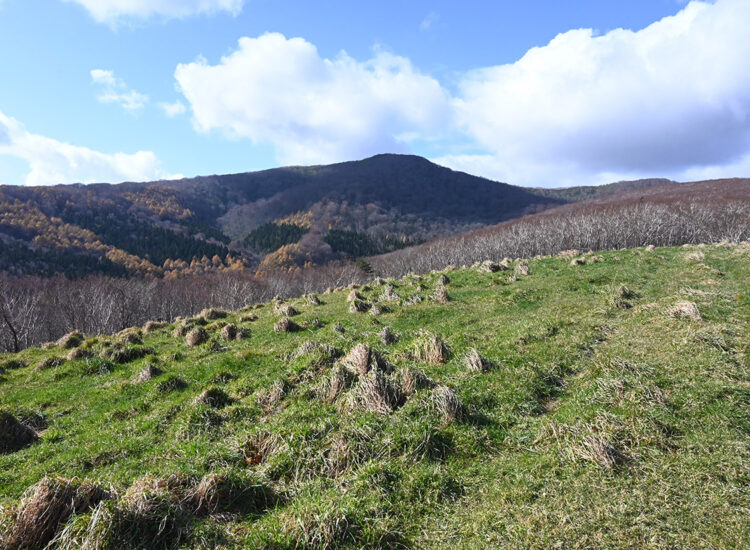
Learning about the Creation of Wooden Vessels Through a Look at Mount Inaniwa

Located northwest of Ninohe City, Mt. Inaniwa commands a panoramic view of Mt. Iwate, Mt. Nanashigure, and Mt. Hakkoda. The foot of the mountain is covered with forests of beech, Japanese horse chestnut, and Erman’s birch, and the clear stream water flows through the mountain into the Appi River. This area was once a lush forest where wood workers went in search of quality wood. They used to travel along the watershed of the Appi River to make wooden vessels.
The process of turning a log into wood can be divided into two main parts: making the rough shape and grinding the wood for a clean finish.
The aragata (rough shape), also called arakiji, is a block of wood split from a log to form the approximate shape of a vessel. The process of making the rough shape begins with tree felling. Then, a log is manufactured and is converted into lumber with careful planning so as not to waste the wood, and the rough shape can finally be carved out. The next step is to make the dried aragata rough shape into a vessel by fixing it on a lathe, rotating it, and applying a Japanese hand plane to form its shape. There are three types of lathes: the hand-grinding lathe, which has been used since ancient times; the water wheel lathe, which came into use in modern times; and the mechanical lathe, which was introduced later. As the lathes developed, they were able to produce more vessels efficiently than before.
Some of them required a minimum of five to six years of training before they could be used. Depending on the shape and part of the wood product, the wood workers used more than ten different types of hand planes of various shapes and sizes. Only the most skilled wood workers with a craftsman’s senses ingrained in their hands could recognize the subtle difference between the delicate shapes of the hand planes. The wood workers forged many types of hand planes using bar-shaped steel themselves, so they needed not only the skills of forming the aragata rough shapes of wooden vessels but also the skills of a blacksmith.
Photo provided by Ninohe City
